5 Procurement Challenges Solved by Automation


If you still rely on traditional manual data entry, use Excel spreadsheets, or lack proper visibility into your procurement data, as well as data from other departments, it’s time for a procurement process overhaul.
Fortunately, over the last few years, automation has emerged as the ultimate solution to tackle each of these challenges head-on.
Today, we’ll dive into precisely how procurement automation solves these hurdles.
Let’s jump straight into the first one: manual work and the errors it brings.
Ever feel like you’re stuck in a never-ending loop of paperwork and waiting for approvals in the procurement process?
From identifying procurement needs and searching for the right suppliers to invoicing, every step seems to drag on endlessly.
That is—if you still do it manually.
Consider the time it takes just to search for suppliers.
According to McKinsey, a sourcing professional spends over 40 hours searching for a single supplier, only to consider a fraction of the available options.
It’s no wonder this process alone can take up to three months!
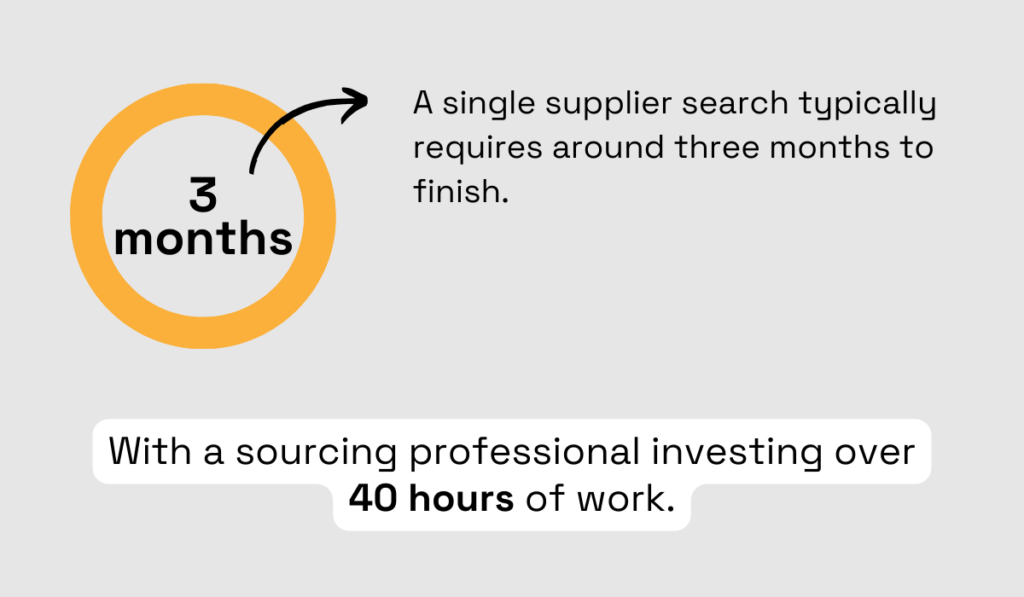
Illustration: Veridion / Data: McKinsey
And let’s not overlook invoice processing, a time-consuming task that the Ardent State of ePayables 2022 report reveals takes an average of 10.9 laborious days for a single invoice.
Moreover, manual data handling, often executed through error-prone spreadsheets, compounds the problem.
Shockingly, 50% of procurement processes rely on spreadsheets.
The risk of data errors looms large, with the likelihood of duplicating purchase orders, but also spending excessive time hunting for information daily.
Fortunately, automation presents a viable solution to each of these challenges.
By diminishing reliance on manual tasks—such as data entry, document handling, and approval processes—automation drives efficiency, accuracy, and consistency in procurement operations.
For example, by replacing Excel spreadsheets with AI-powered automation tools, you can achieve data accuracy levels as high as 99%, leaving little room for error.
And the time saved is truly game-changing.
Automation tools with AI and machine learning algorithms, such as big data platforms like our very own Veridion, can cut supplier discovery and sourcing times by up to 90%.
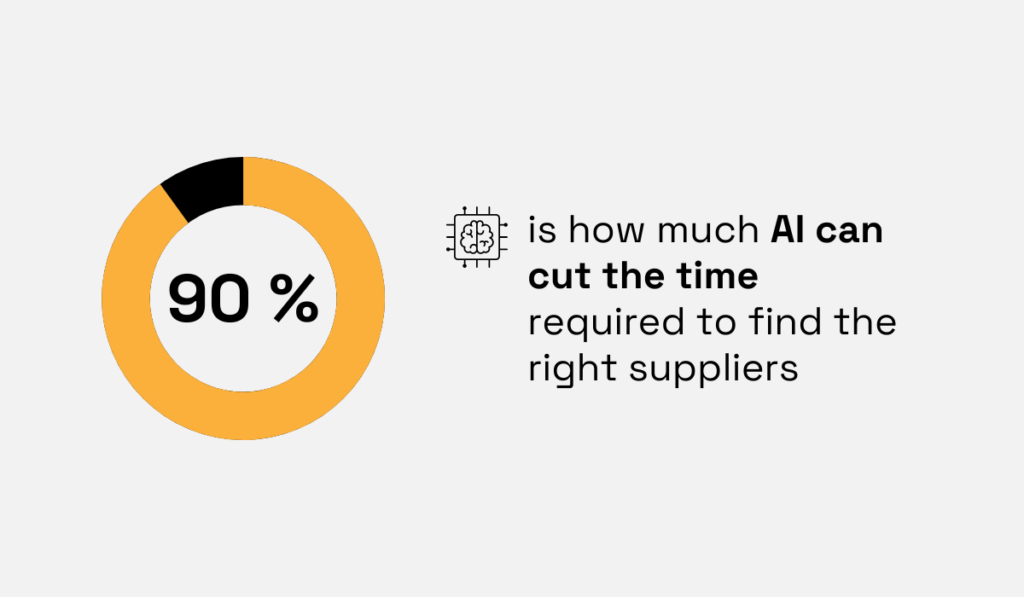
Illustration: Veridion / Data: McKinsey
What used to take months can now be done in hours or even minutes.
And as for invoice processing, automating the process reduces the turnaround time to a mere 3.71 days, which is also a significant improvement.
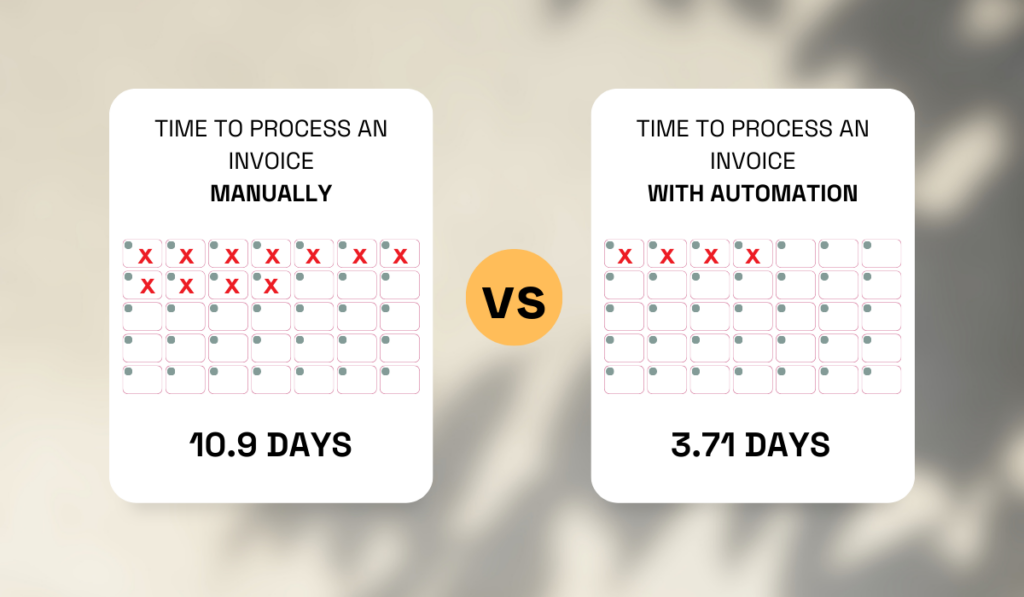
Illustration: Veridion / Data: Medius
In light of these examples, the superiority of automation over manual workflows is undeniable.
It not only shoulders the burden of manual tasks but also does so with unparalleled accuracy and efficiency.
Procurement operations serve as the lifeblood of any organization, ensuring a seamless flow of goods and services vital to the company’s operations.
However, gaps in these workflows present a significant challenge, impeding efficiency, productivity, and, ultimately, the company’s bottom line.
At the heart of this challenge lies the reliance on manual processes and disjointed communication channels.
Traditional procurement workflows often involve multiple stakeholders, complex approval hierarchies, and disparate systems, which all lead to bottlenecks and inefficiencies.
Consider the time it takes for a purchase requisition to transform into a purchase order within your procurement department.
According to the American Productivity and Quality Center (APQC), top-performing teams achieve this in a matter of five hours, while lagging counterparts may take two days or more.
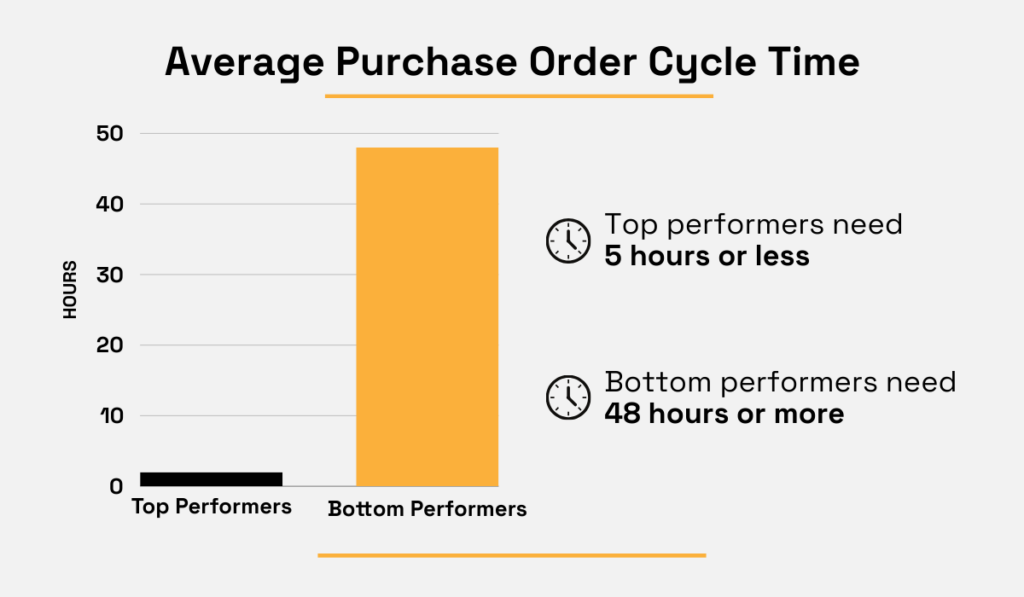
Illustration: Veridion / Data: APQC
These delays stem primarily from cumbersome approval processes and the lack of streamlined workflows and real-time visibility.
If not, it’s time to consider automation.
Automating your procurement processes streamlines operations and eliminates bottlenecks in your entire procurement lifecycle—from raising purchase requisitions to processing payments.
Automated workflows also ensure tasks are routed to the right stakeholders promptly, reducing approval times and enhancing accountability.
Furthermore, procurement automation tools provide real-time visibility into your procurement activities, empowering you with actionable insights and data-driven decision-making capabilities.
Whether tracking the status of purchase orders or monitoring contract milestones, automation fosters transparency and accountability across all your procurement activities.
Finally, automation bridges the gaps in your procurement workflows and transforms them into cohesive, efficient, and agile processes.
Procurement is a dynamic field where change is constant.
Whether it’s switching suppliers, refining procurement processes, or adopting new systems, adaptation is key.
Yet, change isn’t always smooth sailing.
When people are accustomed to specific suppliers, processes, or tools, introducing change can be met with resistance.
Employees may hesitate to embrace new procurement processes due to uncertainty, job security concerns, or simply the comfort of familiar routines.
Organizational culture can further complicate matters.
Resistance to change, lack of stakeholder buy-in, or past change failures can impede the adoption of new practices.
Moreover, procurement involves multiple stakeholders, systems, and regulations, making change management intricate and demanding careful coordination.
Integrating new procurement processes into existing systems can also pose challenges, especially if the systems are outdated or incompatible.
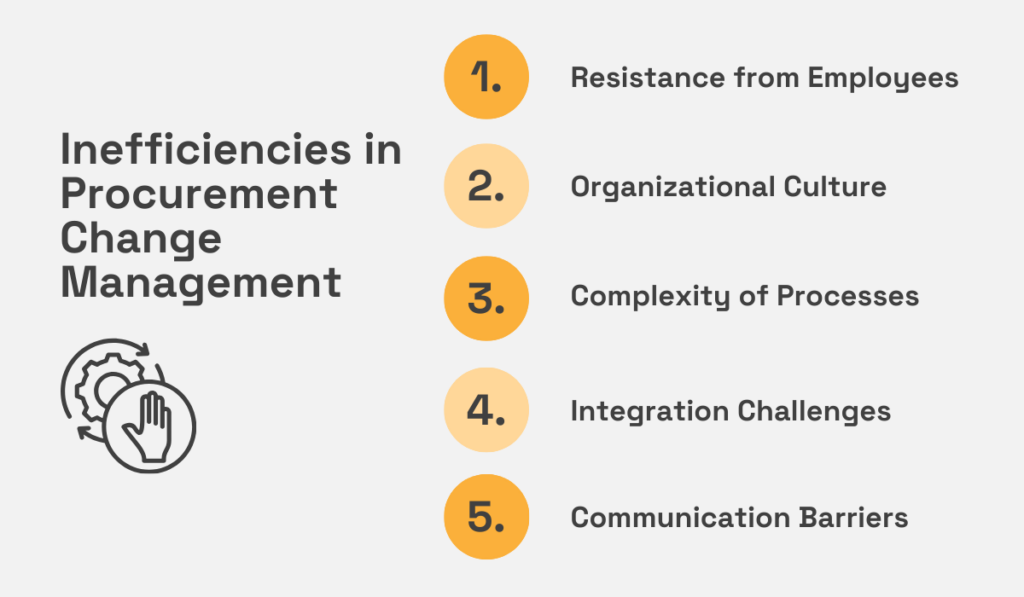
Source: Veridion
Clearly, change management in procurement is no easy task.
But here’s where automation steps in to save the day.
Firstly, automated procurement systems standardize workflows and processes, easing the transition and minimizing resistance to change.
Automation tools also offer centralized communication and collaboration features, thus helping ensure that everyone stays informed about changes and their impact.
Furthermore, automation tools can efficiently document and track changes.
This helps keep all information in one accessible location.
But the benefits don’t stop there.
Automation enables ongoing optimization and refinement of procurement processes.
With real-time data analytics and insights, organizations can identify areas for improvement, implement changes, and measure their impact over time.
And the best part?
Automation tools are often built on a no-code framework, allowing for swift and hassle-free implementation of changes without costly customizations.
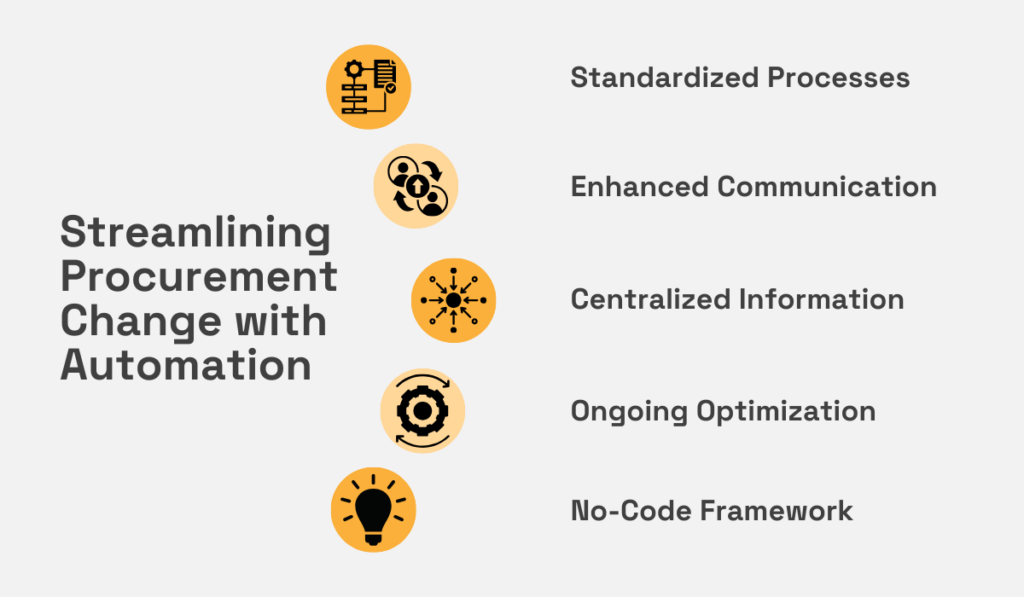
Source: Veridion
In essence, embracing automation in procurement streamlines change management, boosts agility, and ensures procurement processes stay aligned with evolving business needs.
One of the most significant challenges in procurement is the lack of data visibility.
Picture this: you have various spreadsheets, databases, and different systems in place, each creating its own data silo.
Despite the abundance of data, accessing it becomes a headache, as only certain team members might have the necessary access.
However, this is also a problem in other departments and even in companies that pride themselves on being highly data-driven.
In fact, around 39% of highly data-driven organizations manage more than 50 distinct data silos, according to a report by S&P Global.
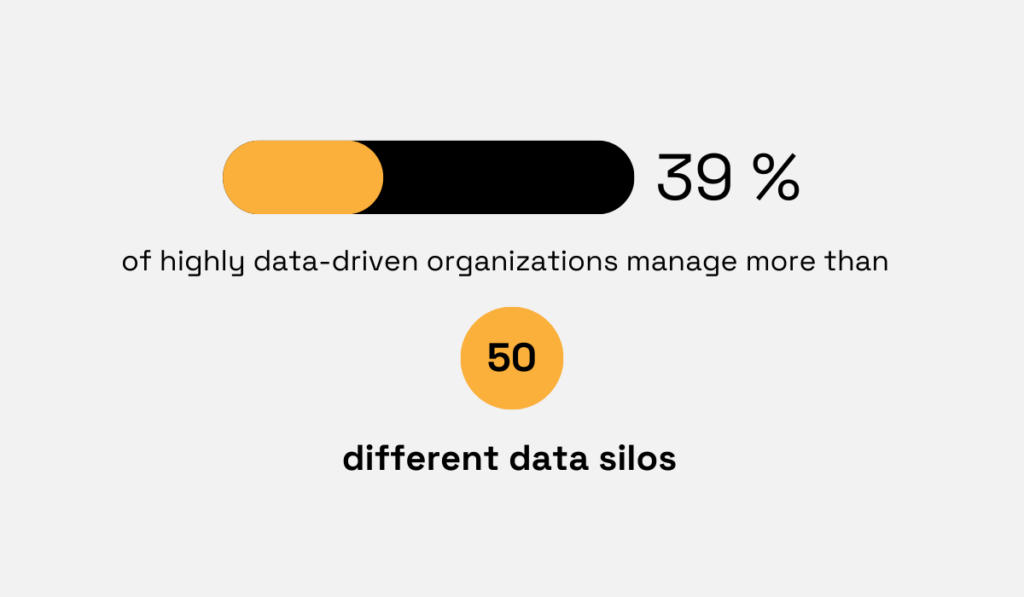
Illustration: Veridion / Data: S&P Global
This lack of visibility and transparency becomes particularly problematic in the collaboration between procurement and finance departments.
But why is this lack of transparency a problem?
For instance, without a clear view of procurement activities and expenditures, finance teams struggle to accurately forecast budgets, allocate resources, and identify cost-saving opportunities.
Moreover, a lack of transparency undermines trust between stakeholders, as finance teams may question the integrity of procurement processes and the accuracy of reported financial data.
This breakdown in trust can strain relationships within the organization and with external suppliers, potentially impacting supplier negotiations and contract terms.
Fortunately, automation steps in yet again to save the day.
Tools such as enterprise resource planning (ERP) systems consolidate data from disparate sources into centralized repositories, break down data silos and give all stakeholders real-time visibility into business operations, including procurement and performance metrics.
This way, everyone—including finance and management departments—gains a comprehensive understanding of procurement activities.
So, automation not only addresses the lack of data visibility in procurement but also enhances internal collaboration, which is one of the most impactful use cases for using digital solutions and automation, according to McKinsey.
In summary, automation is the key solution to overcoming the lack of data visibility in procurement.
It empowers your procurement department and other stakeholders to collaborate effectively and make informed decisions across the organization.
Making the right decisions in procurement is crucial, yet it’s often hampered by a lack of visibility into data, as well as reliance on outdated or inaccurate information.
This is a common headache for many procurement teams.
SpendHQ’s research shows that 75% of procurement professionals struggle to keep their data up-to-date, leaving them to navigate critical decisions with obsolete information.
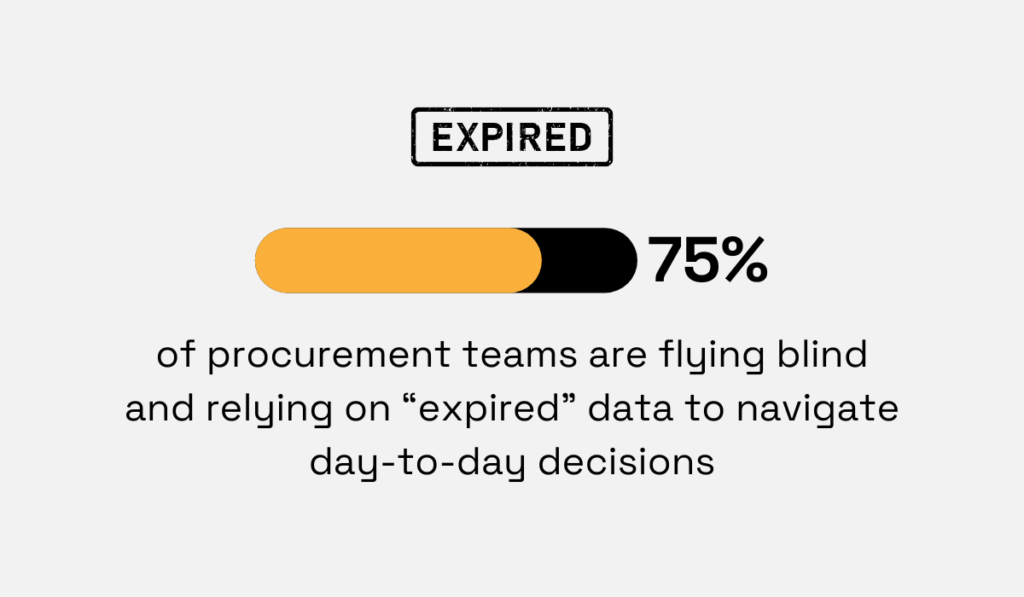
Illustration: Veridion / Data: SpendHQ
This impacts all procurement activities, from supplier selection and contract negotiations to inventory management and risk assessment.
So, why does this challenge persist?
It’s because data is scattered across various systems, creating silos that hinder access and accuracy.
Moreover, when data is managed manually, procurement professionals often spend valuable time collecting, inputting, and reconciling data from disparate sources.
This is time-consuming and prone to human error, as individuals may overlook or misinterpret critical information.
Additionally, the lack of automation means that data updates are not instantaneous, leading to outdated information and hindering timely decision-making.
But yet again—and for the last time today—automation comes to the rescue.
By automating procurement processes, you gain instant access to real-time data insights.
This empowers you to analyze trends, identify opportunities, and make informed decisions that drive efficiency and savings across the procurement lifecycle.
With data at your fingertips, you can quickly spot supplier performance trends, ensure contract compliance, and optimize inventory levels based on accurate demand forecasts.
All this can lead to tangible cost reductions and streamlined procurement operations.
Now, let’s zoom in on one critical area where data-driven decision-making is paramount: supplier sourcing.
Here, automation tools like our supplier sourcing enabler, Veridion, play a vital role.
Veridion is a big data platform that leverages AI and machine learning algorithms to provide accurate, timely, and relevant intelligence on millions of global suppliers.
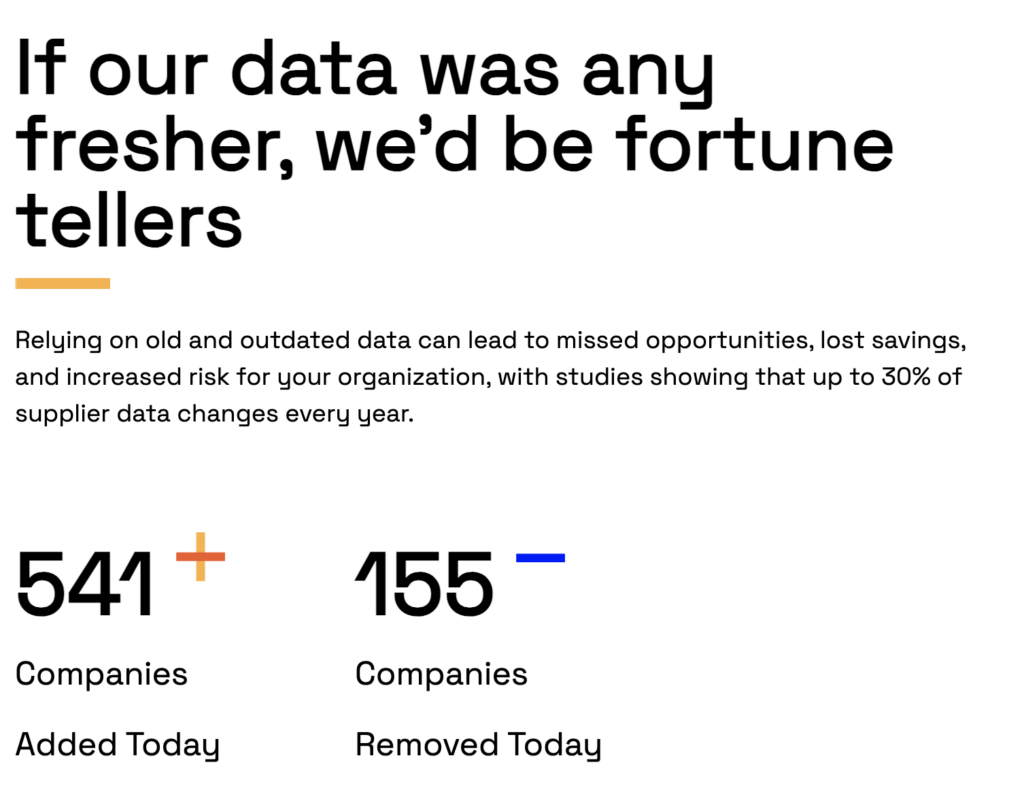
Source: Veridion
This data ranges from firmographic data, size, location, and supplier capacity to product specifications, certifications, compliance, and sustainability metrics.
In other words, Veridion equips you with comprehensive insights to make informed decisions when selecting partners for your organization.
On top of that, Veridion also keeps you in the loop with real-time alerts about any changes in suppliers’ activities so you stay ahead of potential risks and manage ongoing supplier relationships more confidently.
All in all, by embracing automation, you can transition from making poor, uninformed decisions to making data-driven choices that drive strategic value, mitigate risks, and make you more resilient.
The challenges procurement teams face are significant, from relying on manual workflows, inefficient change management, and poor decision-making to everything in between.
However, automation emerges as a beacon of hope, offering solutions to each of these hurdles.
By streamlining processes, enhancing visibility, and enabling data-driven decision-making, automation empowers procurement teams to overcome obstacles and drive efficiency, cost savings, and strategic value for their organization.
But automation is more than just about adopting new technologies in your procurement processes—it’s about transforming procurement practices to meet the demands of today’s dynamic business landscape.
With automation as your ally, the future of procurement looks brighter than ever before.